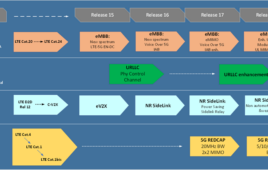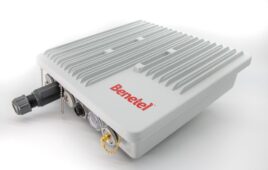SAN FRANCISCO (AP) — Google is once again selling its Internet-connected eyewear to anyone in the U.S. as the company fine-tunes a device that has sparked intrigue and disdain for its potential to change the way people interact with technology.
The latest release of Google Glass comes a month after a one-day sale gave U.S. residents their first chance to buy the hottest accessory in geek fashion.
Google Inc. isn’t setting a time limit for people to buy Glass this time, although the company is emphasizing that the product remains in its test, or “Explorer,” phase.
As has been the case since Google began selling Glass to a select group in 2012, the device costs $1,500. It’s only available on Google’s website for now.
Glass, which comes in five different colors, looks like a pair of spectacles except the Explorer edition doesn’t contain any actual glass in the frame. Instead, the device has a thumbnail-sized screen attached above the right eye so a user can check email, see Twitter posts or get directions without having to grope for a phone.
Google is offering an option to add a titanium frame that can be fitted with prescription lenses or sunglasses from Maui Jim or Zeal Optics that can be clipped on. Google isn’t charging extra for the titanium frame or sunglasses.
The resumed sale of Google Glass is the latest indication that the Mountain View, California, company is nearing a mass-market release of the device.
Google is planning to release a more polished version of Glass by the end of this year that may sell for less than the price of the Explorer version. Analysts believe the cost will have to come down dramatically if Glass is to become anything more than a novelty worn by gadget lovers and wealthy consumers trying to impress their friends.
The parts and assembly of Glass cost only $152.47, based on an analysis by the research firm IHS Technology. Most of Glass’ costs stem from the extensive engineering and design that it took to invent the device, IHS said.
Google hasn’t provided a timetable for a mass-market release of Glass. More details could be announced next month at the company’s annual conference for developers in San Francisco.
Besides cost concerns, Glass also may have to overcome complaints about its potential to distract and intrude. Many of the misgivings about Glass center on its ability to take hands-free photos and video through voice-activated commands. The ability to record images so easily — and perhaps secretly — has raised privacy and piracy concerns and has prompted some casinos, theaters and bars to ban the use of Glass on their property. Safety concerns have also been raised about drivers wearing Glass, prodding lawmakers to draw up new rules forbidding use of the device in moving vehicles.
Google and other technology enthusiasts are hailing Glass as a breakthrough that will make it easier for people to access the Internet while on the go and cause fewer disruptions to social discourse because people won’t be fumbling around with their smartphones as frequently. The device is also being touted as a potentially valuable business tool that could help police officers, fire fighters, doctors and reporters do their jobs better.
About 10,000 sets of the Explorer edition were initially sold to computer programmers, contest winners and other invitees. Google hasn’t revealed how many more sets were sold in last month’s one-day sale.




